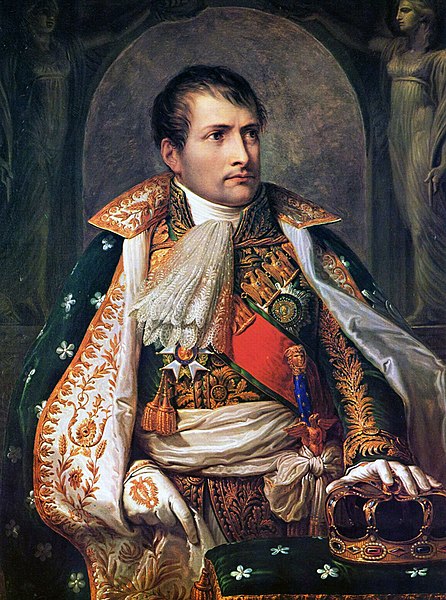This article explores pivotal moments in history that occurred on February 26th, spanning from ancient times to the 21st century.
It covers a broad spectrum of events, including the establishment of the Nabonassar Era in 747 BC, significant battles, groundbreaking scientific and technological advancements, as well as catastrophic incidents that have had profound impacts on societies and the natural environment.
These events provide a snapshot of the diverse forces that have shaped our world, offering insights into human achievement, the complexities of governance and conflict, and the ongoing challenges of ensuring safety and progress.
February 26th Events in History
747 BC – Epoch (reference date) of Ptolemy’s Nabonassar Era begins
This date marks the beginning of the Nabonassar Era, a chronological system established by the ancient Babylonian king Nabonassar. It was notably used by the Hellenistic astronomer Claudius Ptolemy in his works.
The era is significant for its use in astronomical calculations and for marking a clear starting point in the Mesopotamian chronology, facilitating the alignment of historical events with astronomical phenomena.
364 – Valentinian I is proclaimed Roman Emperor
On this day, Valentinian I was proclaimed Emperor of the Roman Empire. Valentinian’s reign is marked by his efforts to defend the western part of the empire from barbarian invasions and to maintain stability within the internal administration.
Also Read: February 25 – On this Day in History
He is known for his strong defense policies, including fortifying the frontiers and reorganizing the Roman army. Valentinian I also appointed his brother Valens as co-emperor, who ruled the eastern part of the empire.

1233 – Mongol–Jin War: The Mongols capture Kaifeng, the capital of the Jin dynasty, after besieging it for months
The Mongol siege of Kaifeng, the capital of the Jin dynasty, concluded with the city’s capture on this date. This event was a critical moment in the Mongol–Jin War, significantly weakening the Jin dynasty and showcasing the military prowess of the Mongols under Genghis Khan’s leadership.
The fall of Kaifeng marked a decisive step in the Mongol conquest of China, eventually leading to the establishment of the Yuan dynasty by the Mongols.
1266 – Battle of Benevento: An army led by Charles, Count of Anjou, defeats a combined German and Sicilian force led by Manfred of Sicily. Manfred is killed in the battle
The Battle of Benevento was fought between the forces of Charles, Count of Anjou, and those of Manfred of Sicily. Charles, with the support of the Papal States, led an army that defeated Manfred’s forces.
Also Read: February 27th Events in History
Manfred, the last ruler of the Hohenstaufen dynasty in Sicily, was killed in the battle. This victory paved the way for Charles of Anjou’s control over the Kingdom of Sicily and significantly shifted the power dynamics in the Mediterranean region.
1616 – Galileo Galilei is formally banned by the Roman Catholic Church from teaching or defending the view that the earth orbits the sun
On this day, the Roman Catholic Church officially prohibited Galileo Galilei from teaching, defending, or discussing the heliocentric theory, which posits that the Earth orbits the Sun.
This decision was part of the broader conflict between science and religion in Europe and marked a significant moment in the history of scientific inquiry.
Galileo’s support for the Copernican theory challenged the Church’s geocentric view, leading to his eventual trial and house arrest. This event is often cited as a pivotal moment in the conflict between science and religion.
1794 – The first Christiansborg Palace in Copenhagen burns down
The original Christiansborg Palace, located in Copenhagen, Denmark, suffered a devastating fire on this day. The palace was the residence of the Danish royal family and the seat of the Danish government.
The fire marked a significant loss of cultural heritage, including priceless art and historical documents. The reconstruction of the palace led to the creation of the second Christiansborg, which also faced a similar fate before the current palace, standing today, was built.
1815 – Napoleon Bonaparte escapes from Elba
Napoleon Bonaparte, having been exiled to the island of Elba after his forced abdication in 1814, escaped from the island on this day, marking the beginning of the Hundred Days. This period culminated in the Battle of Waterloo.
Napoleon’s escape from Elba was a meticulously planned operation that saw him return to France, gather support, and briefly re-establish his rule before his final defeat.
This event had significant repercussions for European politics, leading to the Congress of Vienna’s final act and the redrawing of the European political map.

1876 – Japan and Korea sign a treaty granting Japanese citizens extraterritorial rights in Korea, foreshadowing the Japanese occupation of Korea
This treaty, known as the Ganghwa Island Treaty, was signed under duress by Korea and marked the beginning of Japanese influence on the Korean peninsula. The treaty allowed Japanese citizens to trade freely at designated ports in Korea and granted them extraterritorial rights, meaning they were subject only to Japanese law, not Korean law.
This was one of the Unequal Treaties that Imperial Japan imposed on its neighbors, significantly impacting Korea’s sovereignty and leading to the eventual colonization of Korea by Japan in the early 20th century.
1909 – Kinemacolor, the first successful color motion picture process, is first shown to the general public at the Palace Theatre in London
Kinemacolor was a groundbreaking two-color film process and the first commercially successful color motion-picture process. It was invented by George Albert Smith and Charles Urban and was first shown to the public at the Palace Theatre in London.
Kinemacolor provided audiences with a new way of seeing movies, offering more realistic and vibrant images compared to the black-and-white films of the time. Though it was eventually superseded by more advanced color processes, Kinemacolor marked an important step in the development of cinematic technology.
1919 – President Woodrow Wilson signs an act of Congress establishing the Grand Canyon as a national park
The Grand Canyon, one of the Earth’s most powerful and inspiring landscapes, was designated as a national park by an act signed by President Woodrow Wilson. This protection was a significant achievement for the conservation movement in the United States, ensuring that the Grand Canyon would be preserved for future generations to explore and enjoy.
The park is renowned for its overwhelming size, its intricate and colorful landscape, and the unique geological history that has shaped it over millions of years. The establishment of Grand Canyon National Park highlighted the importance of preserving natural wonders and was a landmark event in the history of environmental conservation.
1929 – President Calvin Coolidge signs an Executive Order establishing the 96,000 acre Grand Teton National Park in Wyoming
This significant act by President Calvin Coolidge expanded the protection of the natural beauty and ecological significance of the Grand Teton area. The park is renowned for its stunning mountain landscapes, including the majestic Grand Teton range, and its diverse wildlife.
The establishment of Grand Teton National Park was a pivotal moment in the conservation movement in the United States, reflecting a growing awareness and appreciation for the country’s natural resources and the need to preserve them for future generations.
The park has since become a beloved destination for millions of visitors who come to enjoy its scenic beauty, wildlife, and outdoor recreational activities.

1935 – Adolf Hitler orders the Luftwaffe to be re-formed, violating the provisions of the Treaty of Versailles
In defiance of the Treaty of Versailles, which prohibited Germany from maintaining an air force, Adolf Hitler ordered the re-establishment of the Luftwaffe. This move was part of Germany’s broader efforts under Hitler to rebuild its military strength and defy the restrictions imposed by the treaty following World War I.
The reformation of the Luftwaffe was a critical step in Germany’s military escalation and played a significant role in the buildup to World War II. Under the leadership of Hermann Göring, the Luftwaffe became one of the most formidable air forces by the outbreak of the war, significantly impacting the early stages of the conflict.
1936 – In the February 26 Incident, young Imperial Japanese Army officers attempt to stage a coup against the government
This event was an attempted military coup d’état in Japan, carried out by radical factions within the Imperial Japanese Army. The insurgents aimed to purge the government and military leadership of those deemed corrupt and to establish a new regime that would restore the Emperor’s direct rule.
The coup resulted in the assassination of several key political and business figures, but it ultimately failed to achieve its broader objectives. The February 26 Incident led to a significant crackdown on military extremists and briefly stalled the military’s growing influence over the Japanese government, though militarism continued to rise in the years leading up to World War II.
1952 – Prime Minister Winston Churchill announces that the UK has its own atomic bomb
Winston Churchill’s announcement marked a significant moment in the Cold War, signifying the United Kingdom’s entry into the nuclear arms race. The development of its atomic bomb reflected the UK’s desire to maintain its status as a global power and to have a deterrent against potential threats, particularly from the Soviet Union.
The UK’s possession of nuclear weapons also had implications for its relationship with the United States and other allies, as it underscored the importance of nuclear capabilities in global politics and security during the 20th century.
1960 – A New York-bound Alitalia airliner crashes into a cemetery in Shannon, Ireland, killing 34 of the 52 persons on board
This tragic event occurred during the early hours when the Alitalia Lockheed L-188 Electra, on a flight from Rome to New York with a refueling stop in Shannon, crashed during its approach to the airport. The crash resulted in the loss of 34 lives, with 18 survivors.
The investigation into the accident revealed issues related to the aircraft’s approach in poor weather conditions, contributing to the understanding of aviation safety and leading to improvements in navigational aids and procedures.
The accident remains one of the deadliest in Irish aviation history and had a lasting impact on international air travel safety standards.
1987 – Iran-Contra affair: The Tower Commission rebukes President Ronald Reagan for not controlling his national security staff
The Tower Commission, appointed by President Ronald Reagan to investigate the Iran-Contra Affair, issued its report, sharply criticizing the president for his lack of oversight over his national security staff.
The Iran-Contra Affair involved senior U.S. figures secretly facilitating the sale of arms to Iran, which was then under an arms embargo, with the proceeds being illegally directed to fund Contra rebels in Nicaragua, against Congressional prohibition.
The Tower Commission’s findings highlighted significant failures in the administration’s conduct of foreign policy and internal oversight, leading to a major political scandal that marred Reagan’s second term.
1993 – World Trade Center bombing: A truck bomb parked below the North Tower of the World Trade Center explodes, killing six and injuring over a thousand
On this day, a terrorist attack aimed at the World Trade Center in New York City resulted in the deaths of six people and injuries to more than a thousand others.
The bombing was carried out by extremists seeking to punish the U.S. for its Middle Eastern policies, particularly its support for Israel.
The attack exposed vulnerabilities in the security of major national infrastructure and led to significant changes in the U.S.’s approach to combating terrorism, including improvements in emergency response and counter-terrorism measures.
1995 – The UK’s oldest investment banking institute, Barings Bank, collapses after a securities broker, Nick Leeson, loses $1.4 billion by speculating on the Singapore International Monetary Exchange using futures contracts
Barings Bank’s collapse was one of the most infamous financial scandals of the 20th century. Nick Leeson, a trader for Barings Bank in Singapore, engaged in unauthorized speculative trading, which led to massive losses that exceeded the bank’s capital.
The incident highlighted the need for stronger regulatory oversight and risk management practices in the banking industry, leading to reforms aimed at preventing similar financial disasters.
2012 – A train crash in Buenos Aires, Argentina, kills 51 people and injures 700 others
This tragic accident occurred when a commuter train failed to stop at the Once station in Buenos Aires, crashing into the buffers at the end of the line.
The crash was one of the deadliest in the history of Argentina’s railway system and sparked widespread outrage over the state of the country’s public transportation infrastructure. Investigations pointed to long-standing issues with maintenance and safety standards, leading to calls for significant reforms and improvements in Argentina’s rail services.
2013 – A hot air balloon crashes near Luxor, Egypt, killing 19 tourists
The hot air balloon crash near Luxor was one of the deadliest ballooning accidents in history. The balloon caught fire while attempting to land, leading to a catastrophic failure that resulted in the deaths of tourists from various countries.
The accident drew attention to the safety standards of hot air ballooning, particularly in popular tourist destinations. It led to tighter regulations and safety measures for balloon operators to prevent similar tragedies in the future.
